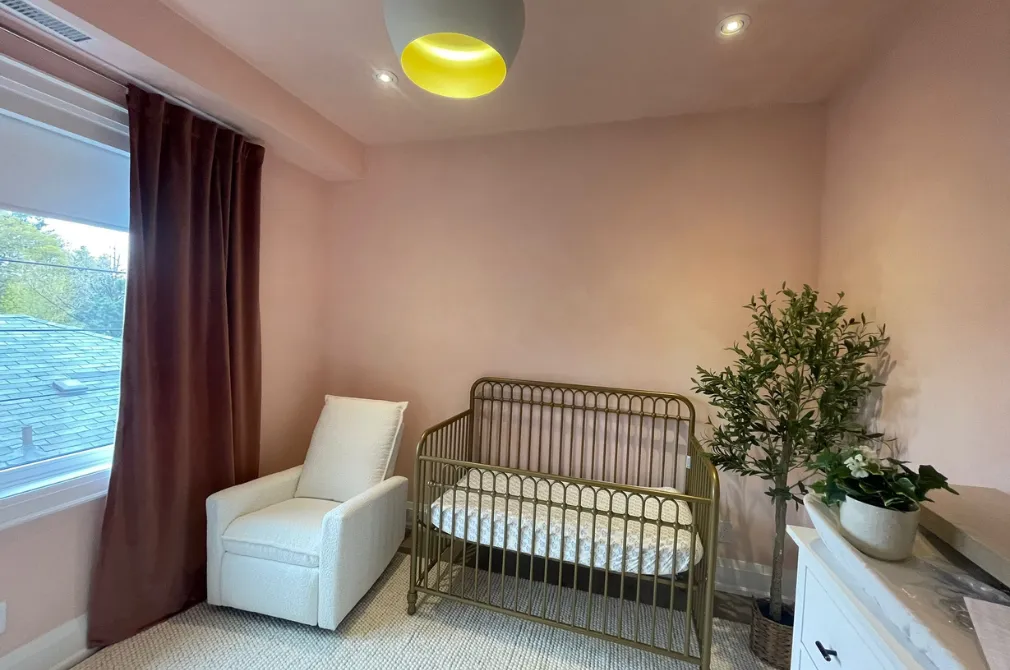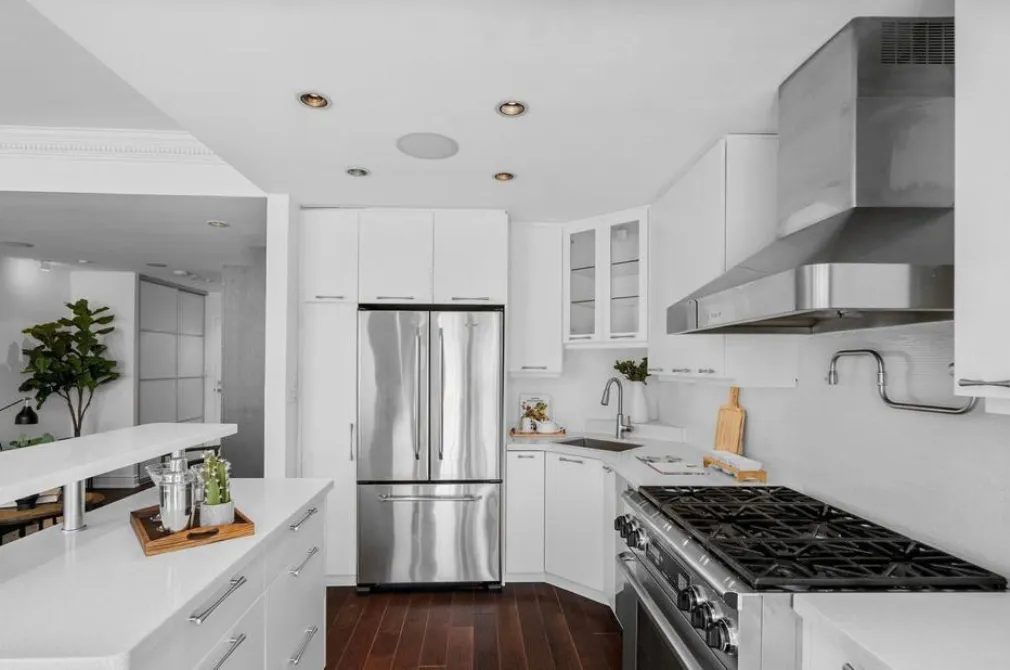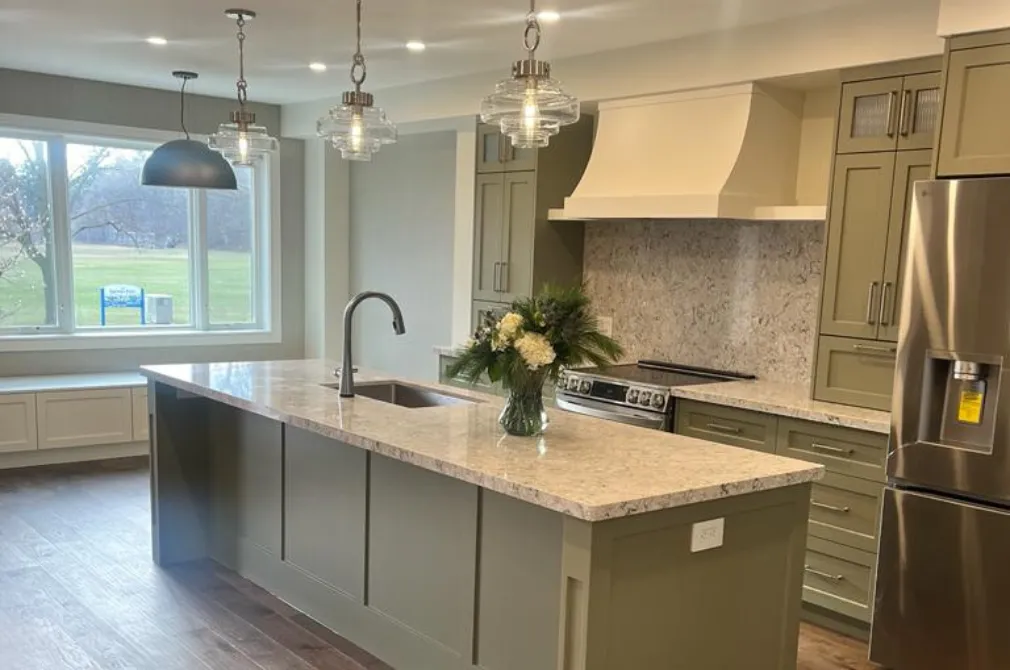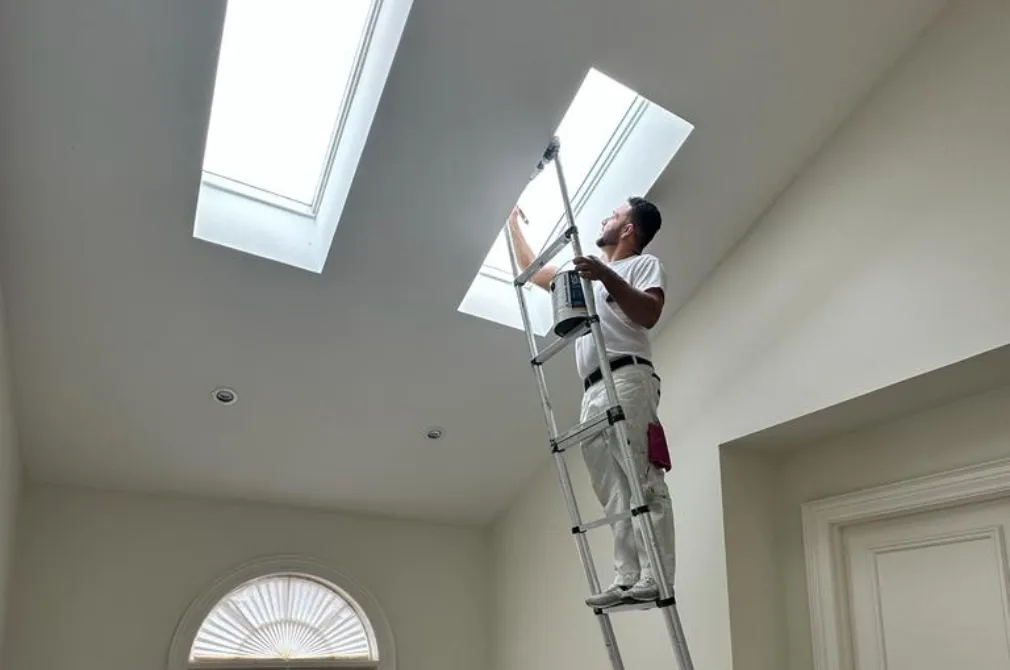Colour choice can be one of the most fun and yet most daunting parts of painting. With so many shades and finishes available, it’s really a matter of one thing: natural light. Natural light can totally change how colours feel in your space, shifting their tone and mood throughout the day. Choosing wall colours that work with your home’s unique lighting ensures your spaces look and feel their best at every hour.
At Encore Painting, we know well how much light alters your space. That is why we are passionate about helping you make an informed decision to make your home cohesive, vibrant, and uniquely yours. With years of experience as home painters in your area, we’ve helped homeowners achieve the perfect look for their spaces by focusing on lighting and design. Let’s explore how natural light affects wall colours, what to choose based on different scenarios, and how to use lighting to your advantage.
How Natural Light Affects the Colour of Your Walls
Natural light and colour have some interesting interactions that depend on a number of factors, including time of day, window direction, and even the weather. Knowing how this works will help you know just how to select colours for each room in your home.
Direction of Light and Its Effects
The direction of your windows is the direction of the quality and warmth of natural light that streams into your space. Here’s how different directions affect colours:
- North-Facing Rooms: These rooms enjoy steady, cooler-toned light through most of the day. Lighter neutrals, warm pastels, and creamy whites can help counteract this coolness and will stop the room from feeling too stark or shadowy.
- South-Facing Rooms: South-facing rooms have abundant warm light throughout the day, so one can use bold, deep colours such as navy, emerald, or charcoal. Lighter shades also look wonderful in these rooms, in soft blues or greys; the warm light prevents them from feeling cold.
- East-Facing Rooms: These rooms are bathed in bright, soft light during the morning but feel more subdued in the afternoon. Fresh, bright colours like yellows, peach tones, or pale greens can make the most of the morning light while staying subtle later in the day.
- West-Facing Rooms: The warm, golden light of the late afternoon and evening dominates west-facing rooms. Earthy colours, such as terracotta, deep beige, or a subdued red, create a harmonious blend with the rich light in the evening hours.

What to Choose and How to Choose Based on Different Home Scenarios
Each house is unique, and so are its different lighting challenges. Let’s consider a few common scenarios and how to handle them when choosing a wall colour.
1. Open Concept Spaces
Open floor plans often have a variety of lighting conditions. For a unified look, choose a neutral-based colour with subtle undertones that can work over changing light conditions. Soft greige, warm white, or taupe are good choices. Use accent walls sparingly to help distinguish areas; for example, a dining nook or a living area.
2. Rooms with Minimal Natural Light
If a room does not have much natural light, try not to use particularly dark or muted tones since this will make the area feel even darker. Instead, try light-reflective colours such as pale yellow, soft lavender, or warm white to lighten up the room. Satin or semi-gloss finishes can help in this regard by allowing light to move around the space.
3. Bright, Sun-Filled Rooms
Sun-drenched rooms are where you can indulge in those much-loved, richer colours without the space feeling small or heavy. Rich jewel tones like deep green, navy, or even dramatic black make a bold contrast to all that natural light.
4. Small Spaces
If it’s a small room, lighter colours can give it an appearance of space. Soft blues, off-whites, or blush tones open up the room and make it airy. Feel free to still experiment with darker shades on one accent wall for depth.
5. Houses with Combined Lighting-as in, Natural and Artificial
It’s important when your space transitions between natural and artificial lighting to choose colours that work under both conditions. Greige, or light olive, are relatively balanced undertones that tend to stay similar throughout the day.

Creating Looks That Work With Natural Light
The way you design your space has a significant impact on how natural light interacts with wall colours. Here’s how to enhance your home’s natural light, and create stunning looks by choosing the right colours for your wall:
1. Matte vs. Satin Finishes
The finish of your walls can make or break how the light reflects on them. While matte finishes are going to absorb the light, creating a soft, mellow look that works amazingly in parts of the house that have enough light, satin and semi-gloss finishes are meant to reflect the light. These add brightness and an air of elegance to rooms not well-endowed with light.
2. Using Mirrors and Metallics
Place mirrors and metallic accents to allow the strategic reflection of light. A well-placed mirror opposite the window will reflect light into those corners, whereas metallic fixtures or other decorative elements will help enhance brightness.
3. Accent Walls for Impact
Accent walls are an excellent way to enjoy bold colours or special finishes without going over the top throughout the space. Place your accent wall in such a way that it captures the most light; this will make the colour pop, creating a focal point in the room.
4. Window Treatments Matter
The window treatments you decide on can affect the amount of natural light that comes into your space. Sheer curtains or light-filtering shades are great for maximizing sunlight, while heavier drapes can soften bright light. With softened light reflecting on your walls, it will create a space which looks more roomy and spacious.
5. Layering Textures and Colours
Layering colours and textures can add depth and dimension to your space, enhancing the overall design. Pair lighter wall colours with dark furniture for contrast or combine warm tones with cool textures for a balanced look.
Choosing Wall Colours Based on Light and Space
Here’s a quick guide to help you select colours based on lighting and room conditions:
| Scenario | Recommended Colours | Why They Work |
| North-Facing Rooms | Warm neutrals, pastel pinks, creamy whites | Counteract the cool, muted light with warmth and brightness. |
| South-Facing Rooms | Deep blues, rich greens, warm greys | Bold colours thrive under consistent, warm sunlight. |
| East-Facing Rooms | Pale yellows, peach, soft greens | Energize the morning light while staying subtle in the afternoon. |
| West-Facing Rooms | Terracotta, caramel, muted reds | Harmonize with the warm, golden hues of late-day light. |
| Low Natural Light | Warm white, pale lavender, light beige | Reflect available light to brighten and open up the space. |
| Bright, Sun-Filled Spaces | Jewel tones, bold black, deep navy | Rich colours balance the abundance of natural light without feeling overwhelming. |

The Science of Colour Perception in Lighting
Have you ever wondered why a shade you loved in the store looks absolutely different once applied to your walls? That happens because of metamerism, a phenomenon where colours appear to change under different light sources. Here’s how various types of lighting can influence your wall colours:
1. Daylight (Natural Light)
Natural light is dynamic, meaning it constantly changes in warmth and intensity throughout the day. That means colours on your walls will look cooler or warmer depending on the time of day and direction of light.
- Morning Light: Cooler and softer, highlighting blues and greens.
- Midday Light: Bright and neutral, showing colours in their truest form.
- Evening Light: Warm and golden, amplifying reds, oranges, and earth tones.
2. Artificial Light
Artificial lighting can be warm or cool, considerably influencing how the colours of walls appear in night-time or windowless rooms.
- Incandescent Lighting: A warm light; that emphasizes reds and yellows, and brings out warm neutrals too, but subdues cool tones.
- LED Lighting: Available in cool white to warm yellow; it’s pretty versatile but usually requires testing, as your picked shade may well react.
- Fluorescent Lighting: cooler and harsher; has a tendency to make whites look stark and colours more subdued.
3. Reflection and Absorption
Colours don’t just absorb light, they also reflect it. For instance, light wall colours reflect more light, making the room feel brighter and larger. Conversely, darker shades absorb light, creating a cozy, intimate vibe.
Tips for Choosing Wall Colours Based on Lighting
To ensure your colours look stunning under all conditions, here’s a step-by-step guide tailored to real-world scenarios:
1. Evaluate Colours in Both Natural and Artificial Light
Before committing to a colour, test samples in your space during different times of the day. This allows you to see how the colour reacts to morning light, midday brightness, and evening shadows.
2. Adapt Colour Choices to Room Functionality
- Bedrooms: Opt for calming hues like soft blues or muted greys to promote relaxation, especially if the space receives dim natural light.
- Living Rooms: In well-lit spaces, warm neutrals or deep jewel tones can create a cozy, inviting atmosphere.
- Kitchens and Bathrooms: For spaces with bright, artificial lighting, whites, pastels, or light greens maintain freshness and vibrancy.
3. Use Adjustable Lighting to Enhance Wall Colours
Installing dimmable lights allows you to control the intensity and warmth of your artificial lighting, ensuring your walls look their best at all times.
The Role of Light Reflectance Value (LRV) in Choosing Colours
Light Reflectance Value (LRV) is a crucial but often overlooked metric in interior design. It measures how much light a colour reflects, on a scale from 0% (absorbs all light) to 100% (reflects all light).
- High LRV Colours (Above 50%): Ideal for smaller rooms or spaces with limited natural light, as they make the area feel brighter and more open. Examples include pale yellows, creams, and light greys.
- Low LRV Colours (Below 50%): Perfect for larger, sun-filled rooms, as they create depth and absorb excess light. Think deep greens, navy blues, and dark browns.
By considering LRV, you can balance lighting and colour to create the desired mood in any room.

Services We Provide to Transform Your Space
Beyond helping you choose colours, our team delivers professional services to ensure your space looks flawless. From wall preparation to the finishing touches, we handle every detail with precision and care. Here’s what we offer:
- Interior Wall Refinishing: Whether you’re refreshing a single room or transforming your entire home, we bring years of expertise to every project. Our team ensures a smooth, even application for a polished result.
- Accent Wall Creation: Looking to add personality to your space? We help you choose and create accent walls that make a statement without overpowering the room’s overall design.
- Custom Colour Matching: Already have a specific shade in mind? We match colours to your vision, ensuring the results are exactly what you’re looking for.
- Eco-Friendly Options: For those seeking environmentally conscious choices, we offer low-VOC and eco-friendly products that deliver stunning results without compromising on sustainability.
Let Us Help You in Choosing the Right Wall Colours
Choosing the right wall colours is both an art and a science. At Encore Painting, we’re here to guide you through this journey, ensuring your walls complement your home’s natural light beautifully. With our personalized consultations, expert application techniques, and commitment to quality, we’ll help you create a space that feels vibrant, harmonious, and tailored to your style.
Let’s make your walls something to admire. Contact us today to start the transformation!